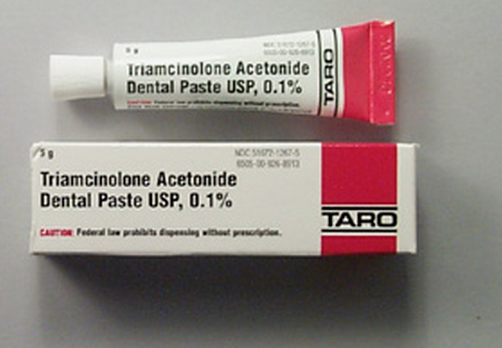- Eczema
- Dermatitis
- Allergies
- Rash

The 0.1% simply refers to the strength of the active ingredient in the cream - in this case 1mg of active ingredient per 1 gram of cream. More information about its pharmacological nature and action can be found at www.drugs.com/pro/triamcinolone.html
Besides the cream form, Triamcinolone comes in ointment, lotion, liquid and aerosol (spray) format in various strengths for use on the skin and as a paste to relieve the discomfort of mouth sores. In its other forms, Triamcinolone Acetonide has been used to treat swelling of the eye, arthritis and asthma.
Because Triamcinolone Acetonide is a powerful drug, there are side effects that might occur, and an article in Wikipedia warns that it should not be used by those with tuberculosis or untreated fungal, bacterial, viral or Herpes infections without consulting a doctor first.
The treated area should not be covered, and the preparation should not be used for children unless a doctor has prescribed it. It should also be noted that the medication should not be used on the face, near the eyes or on body areas where there are skin folds or thin skin.
Side effects from triamcinolone can include drying and cracking of the skin, acne, itching, burning and change of skin color.
If any of those symptoms are severe or do not go away, a doctor should be consulted. If there are any signs of severe allergic reaction such as difficulty breathing, swelling of the face, lips, tongue or throat, then emergency help should be sought immediately.
It is probably best to consult your doctor or pharmacist for advice if you are at all unsure.